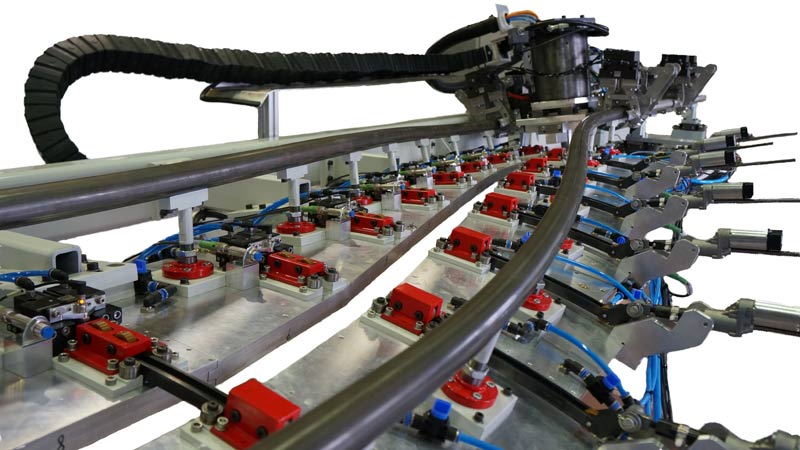At Fraunhofer IWS a lot of preliminary work has been done on the field of friction stir welding. This is the premise for a system technological development of a novel machine concept for friction stir welding of large aircraft parts.
A novel concept, called MUVAX (Multi Use Vacuum Assisted eXoskeleton) was developed by Fraunhofer IWS to fulfill the aforementioned requirements. The research work was carried out in collaboration with Airbus Operations GmbH in frame of the German aircraft research program LuFo IV (funded by the German Federal Ministry of Economics and Energy, BMWi).
This friction stir welding machine consists of a novel clamping system suitable for three-dimensional curved weld seam geometries and an autonomous moving combined welding/milling robot (trolley) that moves along the clamping system.
The trolley moves like a caterpillar along the clamping system and introduces the typical advancing forces locally into the clamping system.
The friction stir welding process will be performed by using a bobbin tool. Thus, the FSW-typical backing par is not needed and the one-side access situation within the final assembly line is taken into account.
The clamping system has a modular design and allows the joining of components of almost any length. In the current configuration of the pilot plant, components with a maximum length of up to 2.500 mm can be joined.
The overall system is designed to ensure that the milling process, which is responsible for achieving the required gap tolerances and the friction stir welding process can be carried out within one clamping configuration.
One special characteristic of the system is that although the system has a high kinematic flexibility and a high degree of light weight design, the system achieves a high accuracy during the welding process. This is possible by a local dissipation of the process forces in the joining zone. Therefore, so-called dynamic bolts were developed and protected by patents. The dissipation of process forces from one clamping side to the other occurs directly next to the joining zone instead of dissipating the force through the welding head.
As a result the combined milling/welding trolley precisely guides the welding head without a risk of jamming.
The test campaign of the MUVAX system showed, that the new concept is suitable for large flexible aircraft parts with complex three-dimensional curved welding tracks. The results are very promising, so that an enhancement of the system for parts with a length of up to 9 m is being worked on.
 Fraunhofer Institute for Material and Beam Technology IWS
Fraunhofer Institute for Material and Beam Technology IWS